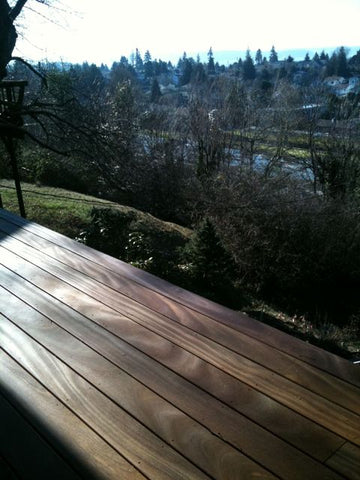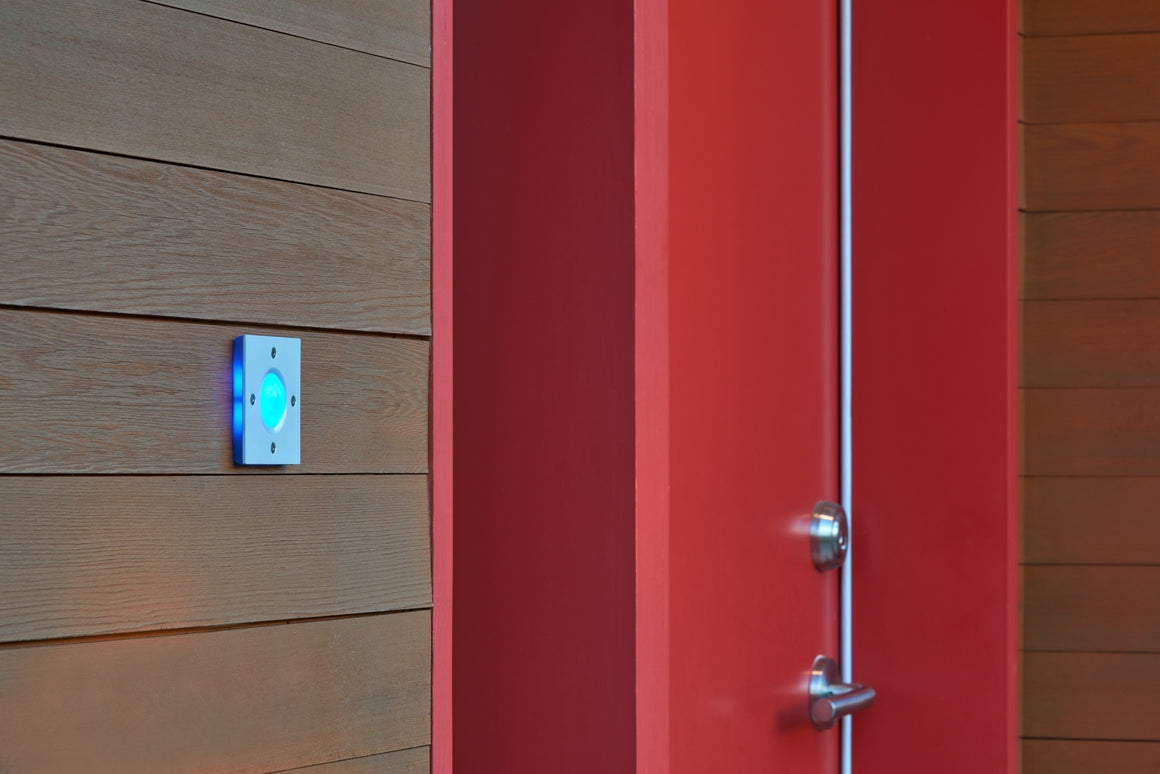
Designing it all, or: Why the Piersons have no deck railing

I am sure it is a common predicament in designy households. A vision appears: the Perfect Bed. Or: the Ideal Coffee Table. Or, in our case: the Best Deck Railing. Unable to leave well enough alone, we have the good-bad luck of knowing how things can be made. We have the resources to design and build our concepts. And we have the stubborn and peculiar desire to see our project through on our terms.
Our deck was undertaken in the summer of 2008. We had contractors come in and repair the cantilevers, then Ted spent a few beautiful days laying the deck with some lovely wood. Next came the railing. Our old railing was no longer code-compliant, and with small children we really do care about safety and such. Besides, it looked shoddy compared to the beautiful new deck. We considered our options: cable railing, pre-fabbed glass or steel panels, wood.
We are still considering our options, having lost a full summer of deck dining in the process. Shall we anodize? Powder coat? How about electric blue? Harvest gold? Dark gray ano? Cor-ten steel? Tis a lovely problem to have, but I wonder sometimes what is wrong with us that we can't just order up and have a serviceable railing.
What would we "sacrifice" by going with a standard option, and is it worth the time lost? It is the designer's quandary. I want to know what hang ups other designers have had.
Leave a comment
Comments will be approved before showing up.
Also in Blog

Spore Operations During COVID-19 Outbreak
Thank you for supporting our small, family-owned business.

Black Doorbells and Chimes: a Primer

Do I Need a Transformer for my Doorbell?
We get a lot of questions about doorbell transformers! Here we will attempt to answer the most common of them.
What is a doorbell transformer?
A transformer converts line-voltage to low-voltage (16 volts). In the United States, line-voltage 120 for most household wiring (this is what is running to your lights and outlets). In Europe and other parts of the world, line-voltage is 240. Any transformer that converts line-voltage to low-voltage will work as a doorbell transformer.

